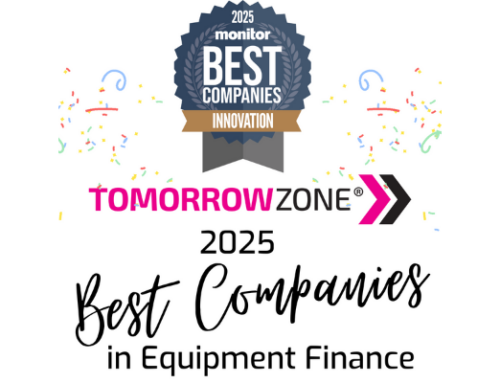
During our two-year exploration of the human side of innovation, the dynamic thought leaders we interviewed continually emphasized the power of leadership in the innovation journey. Reid Raykovich, CEO of the CLFP Foundation, and Lia Wax, President of the CLFP Foundation and VP of Operations and Contract Management at Financial Pacific, highlighted this in their interview. They noted that leaders today can shape a better tomorrow by allowing everybody a seat at the table, even if it makes you uncomfortable, and being very intentional about listening to what they say. Also, have a culture where mistakes are OK. Encourage taking risks and trying new things, even if they fail. This has been my (Raykovich) most valuable lesson, and I apply it to the foundation. I promote a culture where mistakes are allowed and won’t result in termination.
Jen Martin, CLFP, an innovation thought leader, also emphasized the importance of leadership when we interviewed her. She encourages leaders to “build an environment where goals are clear; people are accountable. Where they feel safe to fail, and leaders join in those behaviors with them so that employees feel accepted. This enables the team to generate ideas, some of which fall flat, and others will be wildly successful.”
Safety in a team requires trust among team members. Brian Mohr, Co-Founder & CEO of anthym, a digital platform bringing people closer together by, harnessing technology and the power of storytelling to break down artificial walls and promote authentic human connection within every team. He explained different types of trust and their importance when he said, “For most of us, anything that we’re going to do relies on other people to help us achieve what we want to accomplish in our personal or professional lives. A sense of trust is at the core of good relationships. In the workplace, competency-based trust gets the most attention. Are the people surrounding me good at what they do? Do I trust they’ll deliver in their role? A high degree of competency-based trust is supercritical. The other side of the coin, benevolence-based trust, is about character and vulnerability. It doesn’t get near the attention it deserves. This type of trust asks, do coworkers have my best interest in mind? Are we in this together? Do I suspect anyone on the team is just in it for themselves? When I’m not in the room, will they attempt to advance their agenda at my expense? Worrying about others taking advantage of failures or not knowing the answers breeds dysfunction. This type of trust is hard to build. Leaders haven’t been taught how to do it. This new business frontier needs to grow tremendously, especially in an environment where we don’t see people in the physical space as often, if at all. Being intentional about creating benevolence-based trust is mission-critical. When it’s there, virtually nothing can stop a team. When it’s missing, pretty much everything will get in the way.”
The best leaders lead by example. They engage with their team and create an environment that is safe, not just physically, but psychologically, emotionally, and intellectually. Kelly Riggs author, and dynamic thought leader in leadership, sales development, and strategic planning, noted this when he said, “leadership’s not generational, it’s relational. Relationship building requires adaptability by the leader. If I’m stuck in my ways, the way we’ve always done it, not innovating, or adapting, we’ll struggle.”
Jen Croneberger, a leadership/culture change expert and Founder and Chief Inspiration Officer at JLynne Consulting Group LLC and The HUMAN Leadership Institute, also emphasized the importance of leading well when she said, “Leaders must be curious. Curiosity makes us open to others’ ideas, thoughts, and experiences. We have so much to learn and understand. We cannot be the center of information. Recognize that innovation happens with thought diversity, including our opinions and ideas different from our own. Character, communication, choice, courage, and confidence. When we lead by those five principles, we can find our way through grace and compassion to take others with us.”
We are so grateful for the insights and experiences shared by these generous and visionary leaders. It’s crystal clear that the heart of true innovation beats not in the latest gadgetry, but in the pulse of human ingenuity and curiosity. At TomorrowZone, we’re not just observers of this dynamic; we’re active participants, facilitators, and catalysts, igniting the spark of change in the Equipment Finance industry and beyond. Reach out to TomorrowZone today, and let’s turn your vision into a vibrant reality. The future is bright, and it starts with a conversation. Let’s talk.





